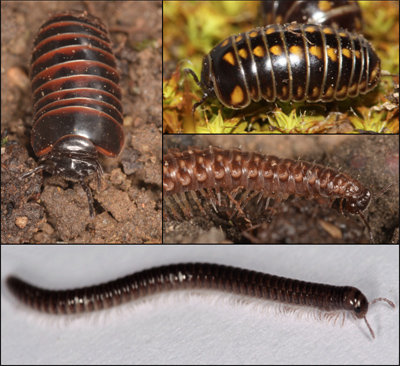Millipedes respond to climate change in the Swiss National Park: a comparison between 1919 and 2019
Josť†Domingo Gilgado ![]() , Bruno Baur, Stephan Zimmermann (WSL)
, Bruno Baur, Stephan Zimmermann (WSL)
In response to the ongoing global warming, plant and animal species change their distribution area. In the Alps, this means that many species colonize larger elevations, provided that they are sufficiently mobile and also find the species-specific habitat conditions at the higher places. Various studies have documented that plants and vertebrates shifted their area to higher elevations. In soil-living invertebrates, which play an important role in ecosystems, the response to global warming is still largely unknown. This project investigates whether millipede species, which are important for the decomposition of organic material, follow the "moving" vegetation to the summit and also shift their distribution to higher elevations. The Swiss National Park is ideal for such a study because millipedes have already been investigated in 1919 and because changes in the elevational distribution cannot be attributed to human activities. In the summer and autumn of 2018 and 2019, we examined the millipede diversity in the SNP. In close cooperation with the faunistic survey, the research group of Stephan Zimmermann (WSL) investigates the soil properties at the individual sites.
Keywords: Myriapoda - global warming - Swiss National Park
Publication
Gilgado JD, Rusterholz H-P & Baur B (2022) — Millipedes step up: species extend their upper elevational limit in the Alps in response to climate warming — Insect Conservation and Diversity 15: 61–72
![]()

![]()